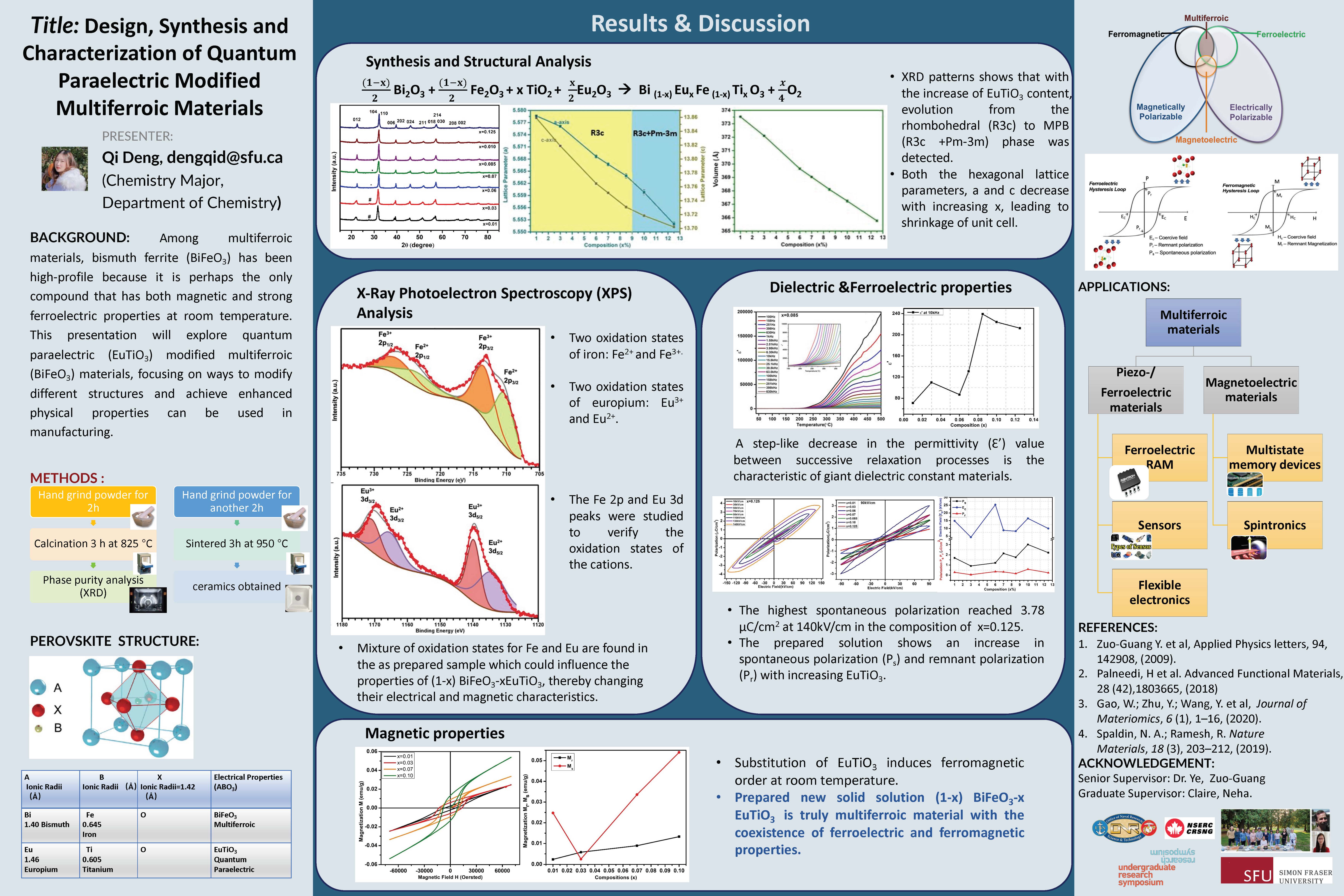Design, Synthesis and Characterization of Quantum Paraelectric Modified Multiferroic Materials
Main Article Content
Abstract
There are three ferroic properties: (1) ferromagnetism, a material’s ability to be attracted to magnets (iron), (2) ferroelasticity, a material’s ability to remain stable in multiple different structures and (3) ferroelectricity, a material’s ability to become reversibly polarized when an electric field is applied to it. Multiferroics have all three of these properties. These materials show great potential technological applications in data storage systems, sensors and transducers.
The materials which exhibit ferroic properties crystallize into a perovskite crystal structure. This presentation discusses the magnetic and electrical properties of the multiferroic material BiFeO3. This research project involves modifying BiFeO3 with EuTiO3 to create BiFeO3-EuTiO3 (BFET) ceramics with EuTiO3 content varying from 1.0-12.5%. Structural analysis shows that the prepared BFET solid solutions crystallize into a perovskite structure. With 10% and 12.5% EuTiO3 content, the structures are rhombohedral (a=b≠c sides of cube) and pseudo-cubic (a=b=c sides of cube), respectively. The dielectric properties of a material can be used as a metric for its ability to store energy. Our work showed that as the EuTiO3 content increases, the dielectric properties also increase, meaning that BiFeO3-EuTiO3 is able to store more electrical energy than BiFeO3. This trend correlates to a decreasing grain size in the ceramic.
Also, compared to pure BiFeO3 these materials show improved ability to withstand an external electric field without becoming depolarized. Furthermore, magnetic measurements indicate that the substitution of EuTiO3 induces ferromagnetism at room temperature, thus making BiFeO3-EuTiO3 a true multiferroic material.
Faculty Supervisor:
Dr. Zuo-Guang Ye, Department of Chemistry, Simon Fraser University
Article Details

This work is licensed under a Creative Commons Attribution-NonCommercial-NoDerivatives 4.0 International License.

